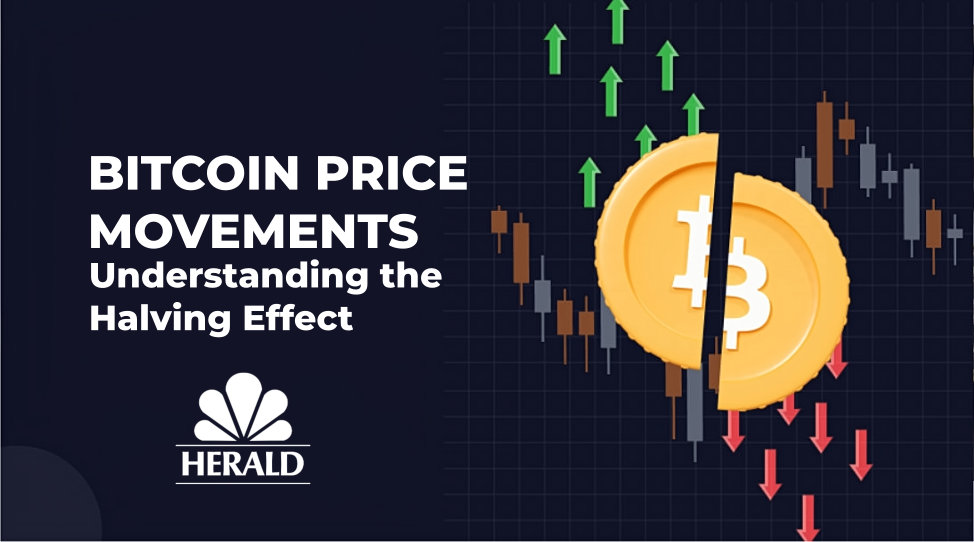Bitcoin Price Movements: Understanding the Halving Effect

Bitcoin Price Movements, Bitcoin Halving Interest, and Bitcoin Price Fluctuations
The cryptocurrency market is known for its volatility, and Bitcoin price movements often serve as the primary indicator of this volatility. As the world’s first decentralized digital currency, Bitcoin’s price is influenced by a mix of factors, including investor sentiment, global economic events, and unique events like the Bitcoin halving. The Bitcoin halving interest is significant as it plays a vital role in shaping the price dynamics. The Bitcoin network undergoes a halving event every four years, reducing the reward for mining new blocks by half. This reduction in supply often sparks significant Bitcoin price fluctuations as investors anticipate the potential for price increases.
The Impact of Bitcoin Price Movements on Market Sentiment
Understanding Bitcoin price movements requires a comprehensive look at market forces. Unlike traditional assets, Bitcoin operates in a decentralized market where price fluctuations occur rapidly, sometimes within hours or minutes. This volatility attracts short-term traders and long-term investors, all aiming to capitalize on price changes. The primary driving forces behind these Bitcoin price movements include speculation, regulatory news, global macroeconomic factors, and technical advancements. Investors are especially drawn to the potential for significant returns despite the risks of such a volatile asset.
The Role of Bitcoin Halving Interest in Price Predictions
The Bitcoin halving interest is one of the most talked-about events in the cryptocurrency world. Each halving event reduces the rate at which new Bitcoins are introduced into the market, effectively reducing the supply of new coins. Historically, these events have been associated with price increases, as the reduction in supply is perceived to lead to higher demand. This creates a cycle where Bitcoin price fluctuations tend to follow a predictable pattern after halving events. Investors closely monitor the halving cycle, adjusting their strategies based on the expected impact on Bitcoin’s price.
During the months leading up to a halving event, Bitcoin’s price often surges due to increased interest in halving. This interest is driven by speculation that the reduction in supply will lead to higher prices. As the halving event approaches, Bitcoin’s price can become more volatile, with traders trying to profit from anticipated price movements. However, while historical data shows a correlation between halvings and price increases, it is important to remember that past performance is not always indicative of future results.
How Bitcoin Price Fluctuations Affect Investor Strategies
Bitcoin price fluctuations reflect the cryptocurrency’s inherent volatility—they are a key factor that investors take into account when formulating their strategies. These fluctuations can be both an opportunity and a risk. For short-term traders, volatility is often seen as an opportunity to profit from rapid price movements. On the other hand, long-term investors might focus more on the overall trend, hoping that Bitcoin’s value will rise steadily over time, especially after events like halving.
The interplay between Bitcoin price movements and investor behavior can lead to exaggerated fluctuations in the short term. For example, when Bitcoin experiences a sudden increase in price due to a surge in Bitcoin halving interest, many investors may rush to buy, further driving the price up. Conversely, when prices fall, panic selling can amplify the decline, creating a cycle of price fluctuations that can be hard to predict.
The Historical Significance of Bitcoin Halving
Each Bitcoin halving represents a milestone in the cryptocurrency’s history, with the most recent events substantially impacting Bitcoin’s price. Looking back at previous halvings, one can observe a clear pattern where Bitcoin price fluctuations tend to follow an upward trajectory after a halving event, though this is not always immediate. The most notable example occurred after the 2012 and 2016 halvings, where Bitcoin saw significant price increases in the months following the events.
The halving process is essential for Bitcoin’s overall supply model and directly influences Bitcoin halving interest. Demand tends to increase when supply becomes more limited, driving up prices. However, not all halvings result in immediate price surges, as other market factors, such as regulatory changes or technological developments, can also play a role in determining Bitcoin’s value.
The Relationship Between Bitcoin Price Fluctuations and Market Speculation
One of the most striking features of Bitcoin price fluctuations is the speculative nature of the market. Because Bitcoin is still a relatively new asset class, many price movements are driven by speculation rather than underlying fundamentals. Investors may react to news, rumors, or trends, which leads to sudden spikes or drops in Bitcoin’s value. The anticipation of Bitcoin halving interest often results in speculative buying in the months leading up to the event, causing prices to rise even before the reduction in mining rewards occurs.
The speculative nature of the cryptocurrency market makes it difficult to predict precisely how Bitcoin price movements will unfold. While historical trends show that price increases often follow halvings, the market’s behavior remains unpredictable, and external factors such as regulatory actions or macroeconomic conditions can significantly impact Bitcoin’s price.
Navigating Bitcoin Price Movements in a Volatile Market
For investors looking to capitalize on Bitcoin price fluctuations, adopting a strategy that accounts for the asset’s inherent volatility is crucial. Understanding the forces behind Bitcoin price movements is key, whether through short-term trading or long-term holding. Investors should be prepared for sudden price swings, especially around key events like Bitcoin halving. However, the long-term potential of Bitcoin remains strong for many, with the belief that its value will continue to rise as more people adopt and use the cryptocurrency.
In conclusion, Bitcoin price movements, Bitcoin halving interest, and Bitcoin price fluctuations are intricately linked, with each factor influencing the others in a dynamic and often unpredictable way. As Bitcoin continues to evolve, investors must stay informed about these factors and be prepared to navigate the volatile landscape of cryptocurrency markets. The halving cycle remains one of the most significant events in Bitcoin’s history, and its impact on the price of Bitcoin is something every investor should understand in order to make informed decisions.



